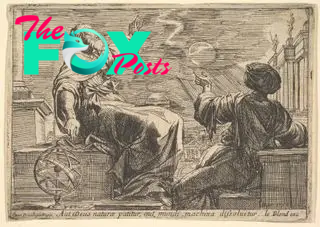Science
'Zeus made night from mid-day': Terror and wonder in ancient accounts of solar eclipses
For millennia, solar eclipses have inspired awe, wonder and fear. After all, it's not often that twilight descends in the middle of the day. And just as we plan for and anticipate their occurrence — like the total solar eclipse that will be visible to millions of North Americans on April 8 — ancient cultures across the world, from the Mayans to the ancient Greeks, developed their own mythologies and traditions around eclipses.
So what did these people think when they saw the sun darkening during the day?
On a surface level, people from ancient cultures knew exactly what they were looking at. "Anybody who pays attention to the sky would be well aware that the moon is blocking the sun," Anthony Aveni, a professor of anthropology and Astronomy at Colgate University in New York, told Live Science. But the significance of that event would have been very different to ancient peoples. "Cultures other than our own, both present and past, had a very different take on the natural world," Aveni added.
Many ancient cultures believed what happened in the skies reflected past, present and future events on Earth. That was particularly true for the Maya — a civilization that reached its peak in Central America during the first millennium A.D. and whose descendants live throughout the world today. The ancient Maya viewed distance in space and distance in time as one in the same, explained Aveni. In other words, gazing far into the cosmos acted as a kind of portal to the past.
Related: How often do solar eclipses occur?

When the ancient Mayans viewed eclipses, they saw what looked like the moon eating the sun, Aveni said. They interpreted that as a view into the cannibalistic practices of their ancestors, which had long since been eliminated by Mayan laws. "So for the Maya, the eclipse, which happens in cosmic space, becomes a reminder that the social order is always in danger of getting out of balance," Aveni explained in a recent talk at Colgate University's Ho Tung Visualization Lab.
The Maya weren't the only people who thought they saw the sun being eaten. In ancient Chinese mythology, solar eclipses occurred when a dragon tried to devour the sun. In response, people would crowd into the streets, banging drums to scare the dragon away, according to NASA. One ancient Chinese record — likely referring to a solar eclipse that occurred in 2134 B.C. — reported that "the sun and the Moon did not meet harmoniously." According to NASA, the cacophony on the streets alerted the emperor to what was happening up above. Incensed that the two court astronomers had failed to predict the event, he had them both beheaded.
-

 Science2d ago
Science2d agoInside Capitol Hill’s Latest UFO Hearings
-

 Science2d ago
Science2d agoYou Won’t Want to Miss the Leonid Meteor Shower. Here’s How and When You Can See It
-

 Science3d ago
Science3d agoHere’s What Trump’s Win Means for NASA
-

 Science6d ago
Science6d agoWhy Risky Wildfire Zones Have Been Increasing Around the World
-

 Science6d ago
Science6d agoIt’s Time to Redefine What a Megafire Is in the Climate Change Era
-

 Science1w ago
Science1w ago4 Astronauts Return to Earth After Being Delayed by Boeing’s Capsule Trouble and Hurricane Milton
-

 Science1w ago
Science1w agoThe Elegance and Awkwardness of NASA’s New Moon Suit, Designed by Axiom and Prada
-

 Science1w ago
Science1w agoSpaceX Launches Its Mega Starship Rocket. This Time, Mechanical Arms Catch It at Landing



























